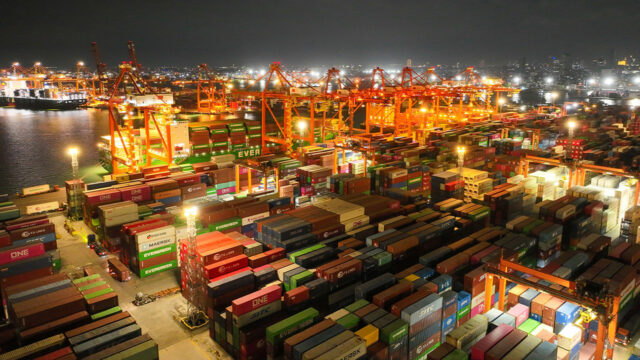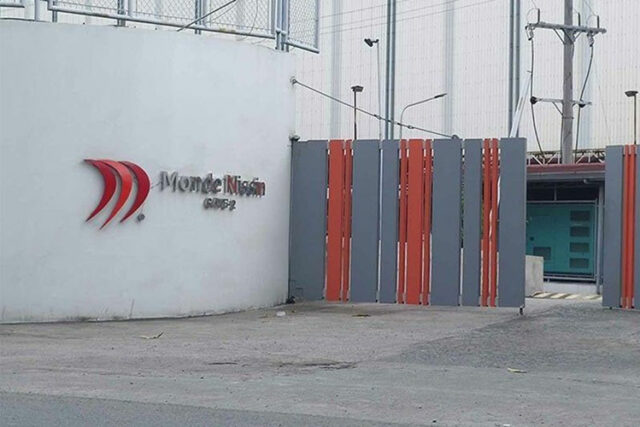PHL conglomerates’ P1.65-T renewable push to test capital discipline — S&P
PHILIPPINE CONGLOMERATES are expected to invest about $28 billion (P1.65 trillion) in renewable energy projects over the next decade as part of a broader $185-billion (P10.9-trillion) investment wave by leading business groups in the Philippines and Vietnam, according to S&P Global Ratings.
In a report released on Nov. 5, S&P said Philippine conglomerates are accelerating their shift toward renewable energy and other emerging sectors as their core businesses mature, positioning themselves for long-term growth.
S&P said the $185 billion combined investment is roughly 2.5 times the conglomerates’ total capital spending in the past decade, underscoring the scale of the upcoming investment cycle.
“We estimate that over the next decade [the Philippine conglomerates] will invest up to $28 billion on renewable energy, or about 20% of their total capital expenditure (capex) plans. The development of renewable energy sources in the Philippines is gaining momentum due to generally supportive policies, with private players leading the way,” S&P said.
By 2030, the country’s top business groups could account for 40-50% of the Philippines’ total renewable energy capacity, the report noted.
The study covered Aboitiz Equity Ventures, Inc., Ayala Corp., JG Summit Holdings, Inc., San Miguel Corp., and SM Investments Corp., which are among the country’s largest publicly listed conglomerates by market capitalization. S&P Global Ratings said it does not rate these companies.
S&P said Philippine firms have demonstrated stronger financial discipline than their regional peers, financing about 55% of capital expenditures in the past five years through operating cash flows and divestments rather than debt.
This helped keep their average gross debt-to-EBITDA (earnings before interest, taxes, depreciation, and amortization) ratio at less than one time in 2024, compared with about six times for major Vietnamese conglomerates.
“Conglomerates in the Philippines and Vietnam are not starting from a weak position. Mature core operations and access to deep funding pools give the firms a credible shot at high-barrier sectors,” S&P Global Ratings credit analyst Fiona Chen said in the report.
“Still, the scale and nature of these investments could push leverage beyond peer norms, raising questions about long-term capital structure and risk tolerance.”
About 20% of Philippine conglomerates’ capital spending is now allocated to renewable energy projects, S&P said, while another 13% goes to infrastructure and 12% to electric mobility. Investments in core businesses still account for more than half (54%) of total capital expenditure.
S&P said the Philippines’ well-developed banking and bond markets and a diversified investor base have provided conglomerates access to longer-tenor and more flexible funding.
“The Philippines’ more developed banking and bond markets, underpinned by a diversified investor base, allow for longer tenors and frequent issuances, which help spread out debt maturities,” the report said.
VIETNAM
In contrast, Vietnamese conglomerates rely more heavily on short-term domestic debt, with about two-thirds of bonds maturing within one to three years, leaving them vulnerable to refinancing and liquidity risks.
S&P estimated that the four Vietnamese conglomerates covered in its study — FPT Corp., Hoa Phat Group Joint Stock Co., Masan Group Corp., and Vingroup Joint Stock Co. — will likely invest $80 billion in infrastructure over the next decade, primarily in high-speed railways and fossil-fueled power plants.
The report said capex in new ventures reached 40% of total spending in Vietnam and 30% in the Philippines as conglomerates ramped up diversification into infrastructure, renewable energy, and electric mobility.
However, S&P noted that many of Vietnam’s new ventures remain loss-making, while Philippine firms still derive more than 80% of their net profit from core operations, highlighting stronger earnings resilience.
It added that governance and transparency remain crucial across both markets as conglomerates expand into multiple sectors. “Improving transparency is key to gaining a clearer view of obligations and cash flow, especially since large projects that span different parts of a group can create systemic risks because of crossholdings and guarantees,” S&P said.
The credit watcher said the next decade will test the capital discipline, funding flexibility, and governance strength of conglomerates in both countries.
“How conglomerates in the Philippines and Vietnam resolve today’s funding choices will not just shape their balance sheets but their capacity to invest in transformation, sustainability, and new markets,” it said.— A.G.C. Magno












